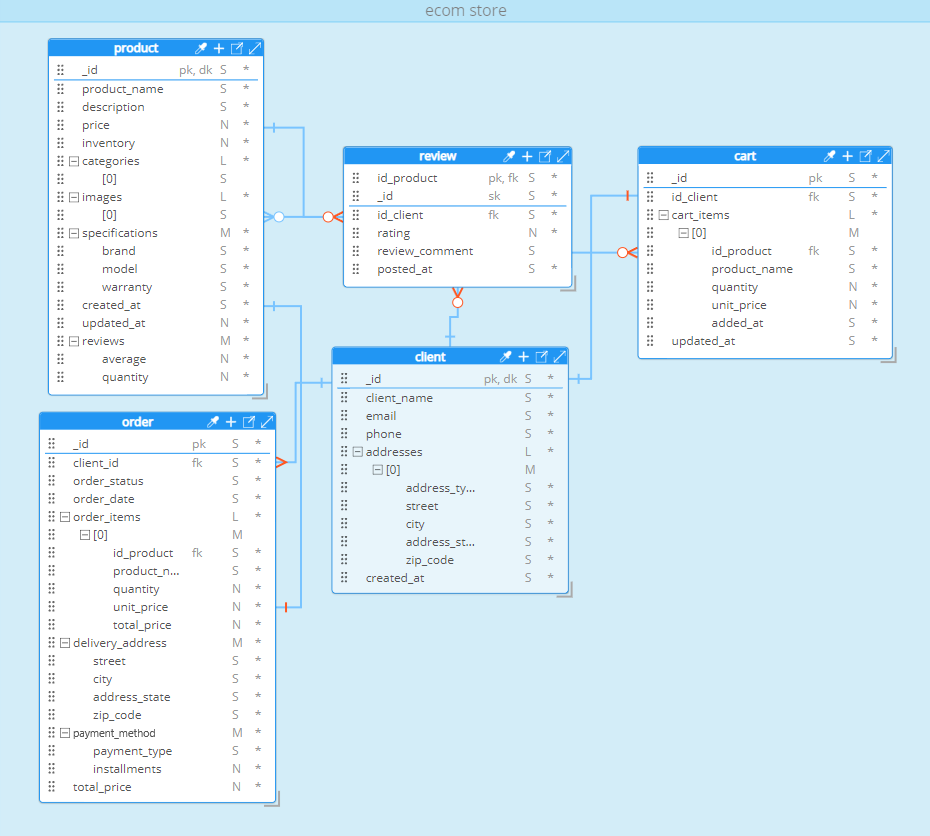Scalable NoSQL Database Design for E-Commerce
Project Overview
As part of my postgraduate program in Data Architecture and Engineering, I developed a scalable NoSQL database solution for an e-commerce platform. This project applied advanced data modeling techniques to optimize read and write operations, ensuring high availability and efficient query performance using Amazon DynamoDB.
Project Context
The project focused on designing and implementing a data architecture for Amazonas, a growing e-commerce platform that sells electronics, apparel, household items, and books. The system required a NoSQL database to handle user registrations, shopping carts, orders, payments, and product reviews while maintaining scalability and efficiency.
Key Technologies & Tools
Solution Architecture
1. Conceptual Model
The core entities and relationships of the system included:2. Logical Model & NoSQL Adaptation
To optimize DynamoDB’s query performance, I applied denormalization. This involved embedding frequently accessed data within related entities. Key decisions included:
3. Partitioning & Sharding Strategy
To ensure horizontal scalability, I implemented a strategic sharding approach:4. High Availability & Scalability Measures
To enhance system resilience and performance in the future, the following measures can be incorporated:Implementation
The database schema was implemented in a local DynamoDB instance using NoSQL Workbench. A Python script (Boto3) was developed to automate table creation and insert sample data. The complete codebase is available on GitHub: GitHub Repository.
Conclusion
This project provided hands-on experience in designing a highly scalable, fault-tolerant NoSQL database for a real-world e-commerce application. The implementation of DynamoDB Global Tables, auto-scaling strategies, and efficient partitioning showcased advanced data engineering principles critical for building robust distributed systems.